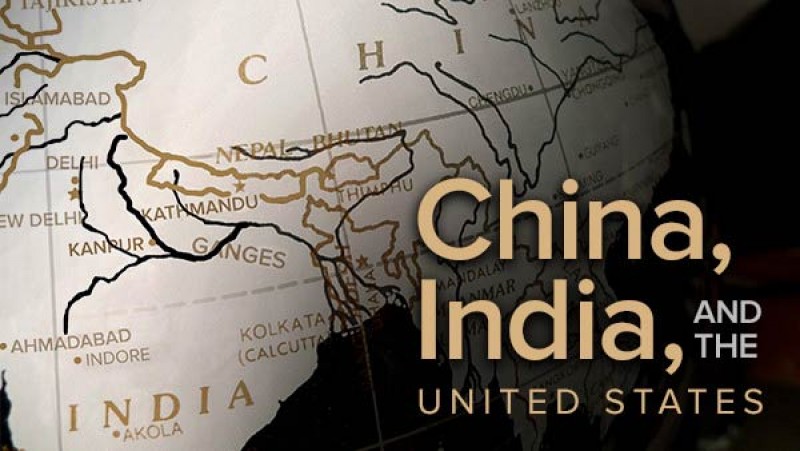Discover the Future of the 21st-Century Global Economy. In addition to bringing you up to speed with the economic stories of these three world powers, China, India, and the United States: The Future of Economic Supremacy also provides you with insights into the next decades of the world economy
Peter Rodriguez – China, India, and the United States – The Future of Economic Supremacy
You are living at a critical moment of change for the world economy. A moment that will be defined by the economic trajectories of three key players. A moment whose outcome will have a deep and lasting impact on the way you live. Recent years have seen a dramatic, unprecedented transformation in the landscape of the global economy. And the catalyst of this transformation—destined to create a new economic order that will scarcely resemble that of the last 300 years—is undoubtedly the rise of China and India. Both nations, which represent around 37% of the world’s population, have experienced a rapid surge in annual economic growth of 7% to 10% in the last decade alone—a growth rate that is nothing short of miraculous.
Just as important as this amazing story are its implications for the United States. Long seen as the central driving force behind the world’s economy, the United States is emerging from the greatest recession in more than 80 years. For the first decade of the 21st century, its average per capita income growth was a paltry 0.53% per year. As China and India continue to gain a dominant foothold in the 21st-century marketplace, America’s role in it will continue to evolve in unprecedented ways.
Knowing what to possibly expect from the future of the global economy presents an enormous opportunity for you to better prepare yourself for the momentous challenges and possibilities of tomorrow. Now you can, with China, India, and the United States: The Future of Economic Supremacy. This provocative six-lecture course, delivered by noted economist and award-winning Professor Peter Rodriguez of the University of Virginia’s Darden School of Business, is your opportunity to preview what the next few decades of the global economy may look like. Offering you pointed looks at the economic past, present, and possible futures of these three powerful nations, these lectures will have you finally grasping the intricate nature of our world economy and the driving forces responsible for where it will stand in years to come.
Get Answers to Pressing Questions about These Economic Giants
In the last 20 years the incremental economic growth of China and India has been the equivalent of adding another United States to the world economy—and it could happen again in just 12 years, or even fewer. The implications of such a statistic demand to be better understood, and Professor Rodriguez’s lectures are the perfect way to witness just how these three economies have gotten where they are today.
Central to this course are revealing answers to some of your most pressing questions about the current state of the global economy and its future.
How long will the United States remain at the top of the global economic ladder, and what will happen when that time passes?
What economic, political, and cultural forces are responsible for China’s and India’s spectacular growth over the last two decades?
When and why might China’s and India’s rapid annual growth rates slow down?
What strategies and policies can these three nations undertake to weather the current global recession?
Discover the Future of the 21st-Century Global Economy
In addition to bringing you up to speed with the economic stories of these three world powers, China, India, and the United States: The Future of Economic Supremacy also provides you with insights into the next decades of the world economy and the new economic order currently being forged. Throughout the lectures, Professor Rodriguez uses his keen economist’s eye to report ideas, trends, and possible outcomes you can expect to see as China and India continue to reach (and possibly even supersede) the economic power of the United States.
Here are just a few of the many predictions and possibilities you’ll explore in depth.
China’s particular challenge to sustain solid economic growth, more so than the two other countries, will be highly political in nature.
India cannot rely solely on information technology to continue growing; rather, it must also achieve global prowess in manufacturing to truly strengthen its internal and external economic power.
The United States must reemerge as a global exporter and must retain its preeminent status in financial markets to ensure its near-term economic future.
Most important, you’ll investigate how the great changes in the coming years will also bring with them a range of benefits and opportunities for each of these three countries. According to Professor Rodriguez, the coming decades of the new global economy will be a bumpy ride, but there is much to remain positive and hopeful about for the United States and the rest of the world.
Learn What to Expect—Before Everyone Else
In addition to being a skilled educator whose awards include Princeton University’s Teaching Excellence Award, Professor Rodriguez possesses significant real-world business experience working with multinational companies, including Rolls Royce and Visa. This know-how, combined with his vast knowledge of global macroeconomics and international business, makes him an authoritative guide to this pressing subject and its implications for your future.
So join him for this chance to find out, before everyone else, just what to expect from the economies of China, India, and the United States. This course is a piercing look at the economic future being shaped right at this very moment.
Read more: https://www.thegreatcourses.com/courses/china-india-and-the-united-states-the-future-of-economic-supremacy.html








